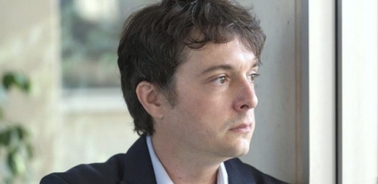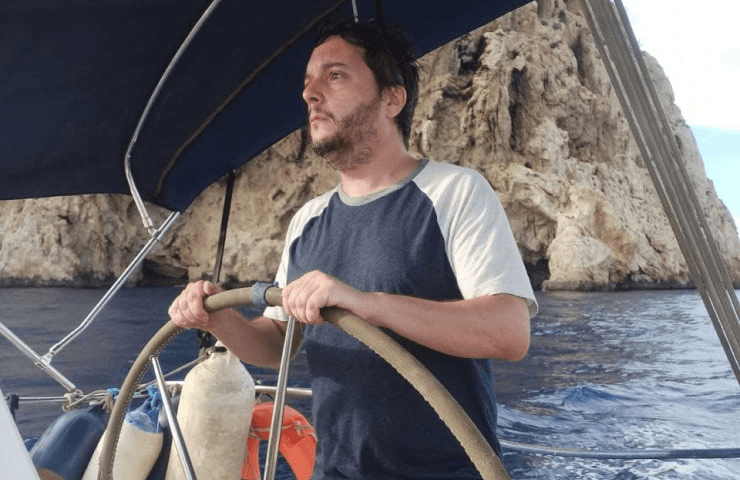Faculty Spotlight: Eduardo Castello

Meet one of IE’s School of Science and Technology most influential thought leaders.
Before joining IE School of Science and Technology this year, Eduardo Castello spent seven years affiliated with MIT, a place that deeply impacted his views as a teacher and researcher. Prior to that, he conducted his master and doctorate degrees at Osaka University in Japan. During his time at MIT, Eduardo received the Marie Curie individual fellowship, the most prestigious early-career academic award granted by the EU. This allowed him to conduct research between MIT and Europe and start to build bridges between the two research communities. It was at MIT that he pioneered a new field of research: blockchain-based robotics, publishing the first papers on the synergy between robotics and blockchain-based technology. He also organized the first academic events for the research community focused on this field.
Meet one of our leading researchers at IE School of Science and Technology.
What brought you to IE? Where were you before? And what keeps you here?
I came to IE because it is a place that is open-minded to innovative ideas and offers the opportunity to develop them and build something new. Especially at the new Sci Tech school, which I have joined this academic year, there are excellent opportunities to build new research labs and shape new academic programs. Before coming to IE, I was at the MIT Media Lab and MIT Connection Science, and it is important to me to try to build a program with similar dynamism here in Europe.
Where do you work outside of IE and what is most exciting to you about this role in your professional career?
I maintain my affiliation with MIT, which I find to be an enriching and exciting place because of its innovative ways to understand how technology intersects with society. Besides my role as an assistant professor at IE, I am a research affiliate at MIT Media Lab and MIT Connection Science. In these labs, I explore the combination of robotic systems and blockchain-based technology to implement new system behaviors, security approaches, and business models for robots in society.
Have you ever had an a-ha moment while teaching that furthered your research? What was it?
During the Introduction to Robotics 2.12 course at MIT, for which I assisted and gave several lectures, I was especially inspired by the success of several methods that led students to new understandings. In the course, students completed theoretical sessions, programming exercises, and real-hardware lab experiments requiring teamwork and project management. I also asked them broad critical-thinking questions throughout the course, for example, “How can we design intelligent robots that improve our quality of life but don't put us in danger?” Bringing questions like this in the course increases student engagement, as they realize they will be able to obtain concrete answers by the end.
Using a methodical approach, questions that seem difficult and “blurry” at the beginning of the course are clarified “step by step”. I saw this method bring students confidence: they realize they can “dissipate the fog” of complicated topics and gain knowledge that previously seemed unreachable. Guiding students through this ‘a-ha’ process has simultaneously inspired me when I am approaching new research questions.
What book do you wish your students would read before taking your class and why?
Being Digital (Nicholas Negroponte, 1996) and The Children's Machine (Seymour Papert, 1993) introduced me to the importance of learning over teaching: learning is an action you take yourself, while teaching is an action directed towards you. In both books, the authors emphasize the importance of students learning on their own (e.g., by emphasizing curiosity or critical thinking), while teachers provide a suitable environment to help in this process. In other words, the teacher becomes a catalyst for learning rather than simply a lecturer. This philosophy is foundational for my teaching method, and I believe it can greatly help students to approach multidisciplinary fields such as robotics.
Please name one of your articles or studies you feel addresses the most important issues for 2023?
One of the most important issues of 2023 is how more and more autonomous technologies are entering our lives and society in general. Specifically in the field of robotics, a key concept that needs our attention is that: there is no robot safety without robot security. In other words, robots lack the protocols and standards required to be safe and secure outside factories. Consider that, when a PC is hacked, the direct consequences typically remain virtual or economic. By contrast, when the vulnerability of a robot (e.g., your future self-driving car) is exploited, not only can there be privacy violations, data breaches, or economic losses, there can also be direct physical consequences. My article If blockchain is the solution, robot security is the problem and video explain this concept.
Another important issue of 2023 if the concept of autonomy in digital systems. In contrast to the mainstream idea that autonomy refers only to systems that have the right answer at the right time (e.g., ChatGPT). One of my latest articles explores the idea of economic autonomy for robots. In this paper, we present the first economically autonomous robot -- a robot able to produce marketable goods while having full control over the use of its generated income -- and discuss the implications of economically autonomous robots. My article Gaka-Chu: A Self-Employed Autonomous Robot Artist and video explain this concept.
Whose research of your IE colleagues do you find interesting? Why?
I would highlight my colleague who teaches robotics with me, Suzan Awinat, who is conducting her PhD research on the very interesting topic of AI that can write poetry.
Tell us one personal thing about yourself that none of your students know. A hobby, sport or talent? Strange fact? Unusual interest?
I lived in Osaka, Japan for 8 years while doing my Masters and PhD degrees, working in the lab of Hiroshi Ishiguro, a pioneer in the field of human-robot interaction (HRI) and where the world's first realistic humanoid robots were made. Besides learning how to speak Japanese, I got interested in animation and sci-fi readings by authors such as Philip K. Dick and Neal Stephenson. I also started sailing there.
